I have a 120 gal tank with a high bio load and quite a few plants. Oscars, pbass, silver dollars, geos and pleco.
I have been getting some low nitrate readings with the API test kit so I got a Salifert to vet it out.
Last week the tank was a mess after about 5 days. Lots of feeding and messy foods. Got my test kit and away we go!
The attached photo shows the tank about 3 months ago. Amazon swords are a little chewed down and tank has some hornwort now.
When I did this test I was very careful to follow the directs to the Tee. I am thinking that when I tested previously I did not shake up the API test solution and vial with the API kit enough.
Conclusion - Both kits show a high Nitrate reading for the tank before the water change. When the Nitrates get high it's a little hard to know how high with both kits, but the API is good at "flashing the red light" so to speak when Nitrates are high. Both indicated Nitrates were maybe 50. The Salifert results were really concerning as difficult to see how high.
The API was a little better at this. Bottom line both kits seem to work. I think I was shaking the stuff enough (API) in prior tests.
Tap water looks good. BTW I tested the tank again the following morning (fish not fed during the gap between tests). It looked the same as #4.
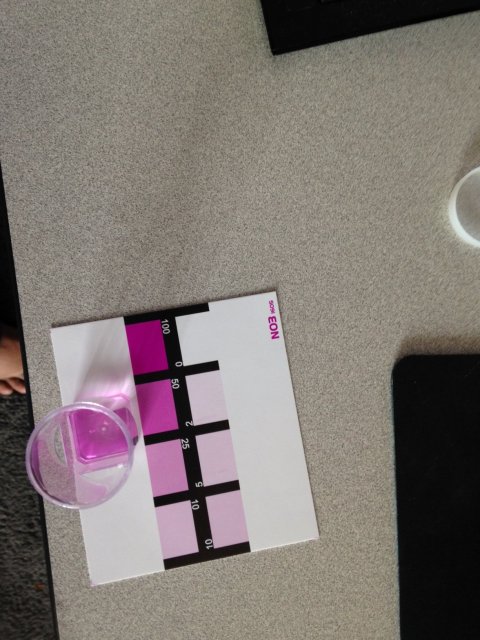
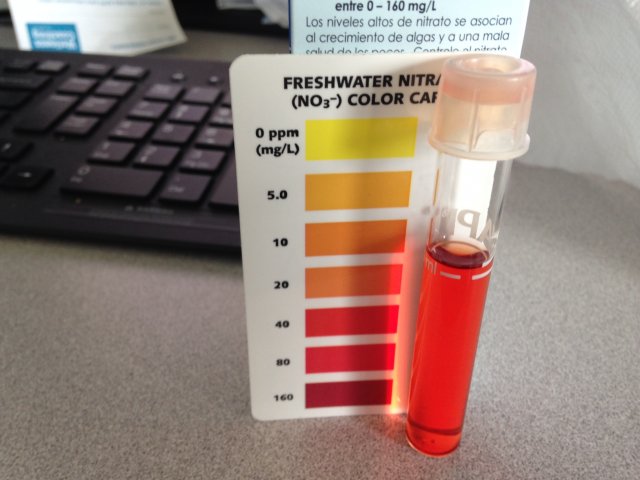
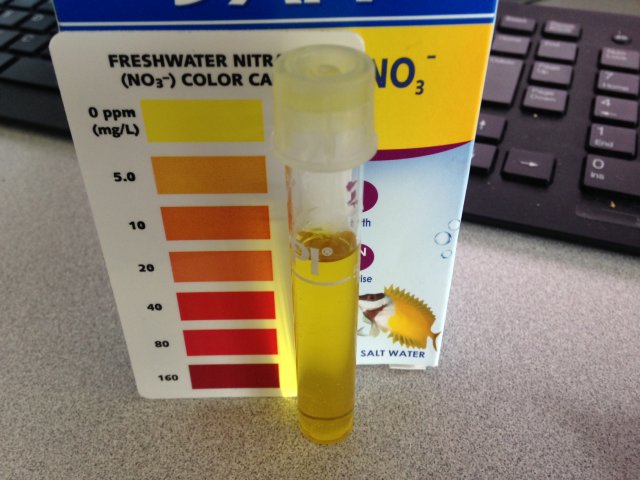
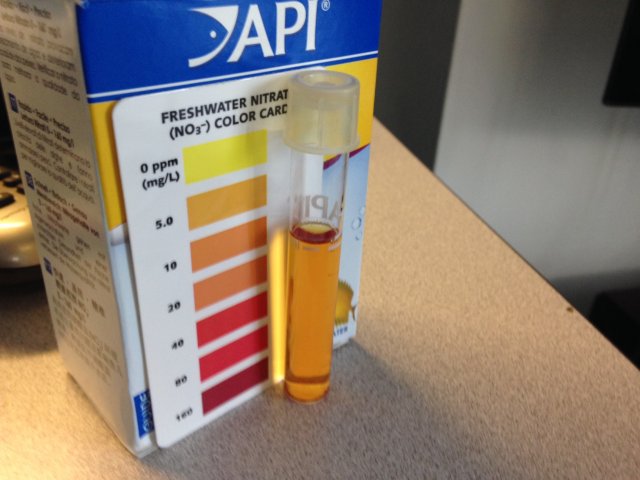
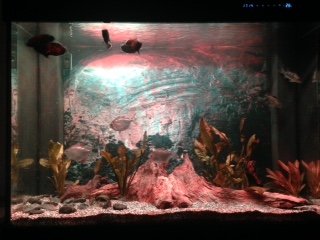
I have been getting some low nitrate readings with the API test kit so I got a Salifert to vet it out.
Last week the tank was a mess after about 5 days. Lots of feeding and messy foods. Got my test kit and away we go!
The attached photo shows the tank about 3 months ago. Amazon swords are a little chewed down and tank has some hornwort now.
When I did this test I was very careful to follow the directs to the Tee. I am thinking that when I tested previously I did not shake up the API test solution and vial with the API kit enough.
- Tested with Salifert and wow. Nitrates were 50 or more!
- Tested with API and sure enough, Nitrates were 40 or more. A little hard to distinguish 40 - 80 difference.
- Tested my tap water. Looks to be 0.
- I did about a 60% water change and it loos like Nitrates are about 5 - 10 with the API kit.
Conclusion - Both kits show a high Nitrate reading for the tank before the water change. When the Nitrates get high it's a little hard to know how high with both kits, but the API is good at "flashing the red light" so to speak when Nitrates are high. Both indicated Nitrates were maybe 50. The Salifert results were really concerning as difficult to see how high.
The API was a little better at this. Bottom line both kits seem to work. I think I was shaking the stuff enough (API) in prior tests.
Tap water looks good. BTW I tested the tank again the following morning (fish not fed during the gap between tests). It looked the same as #4.













